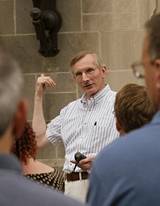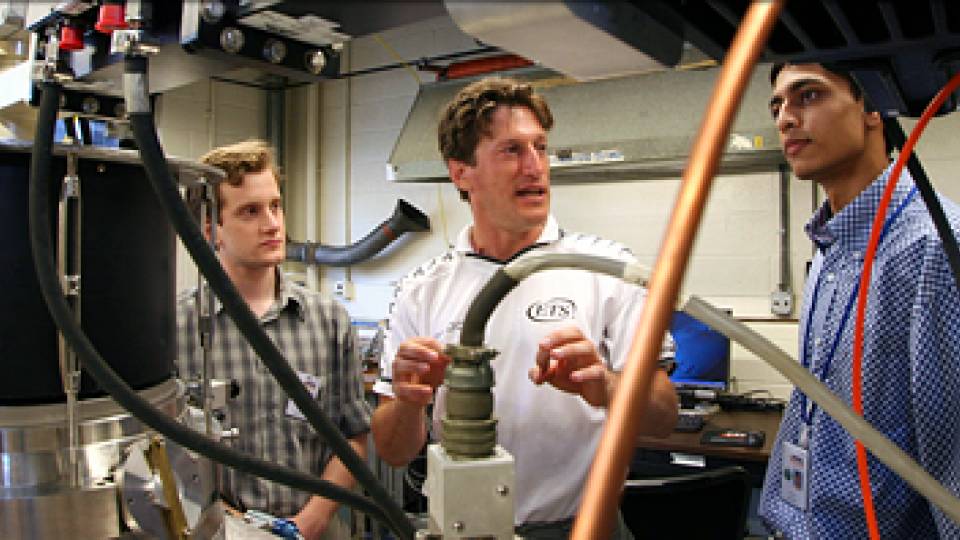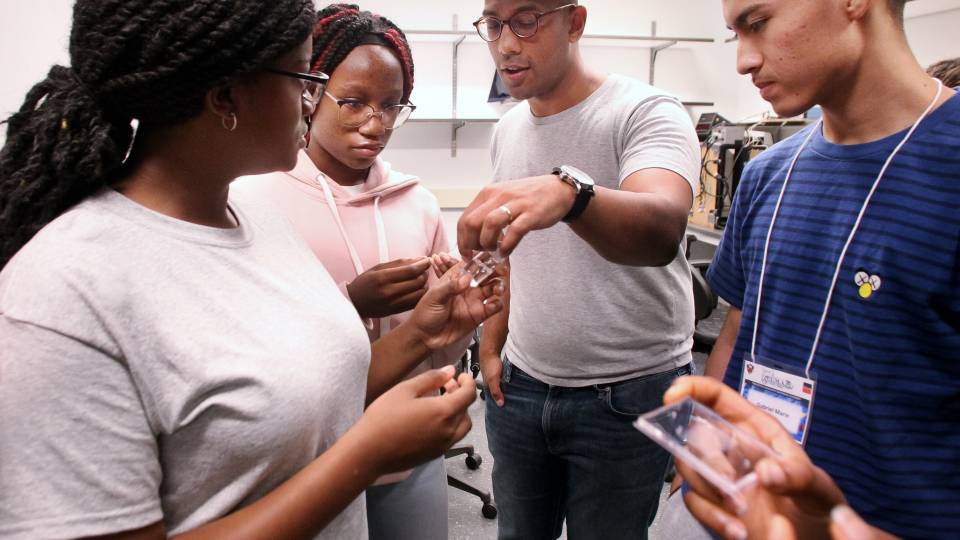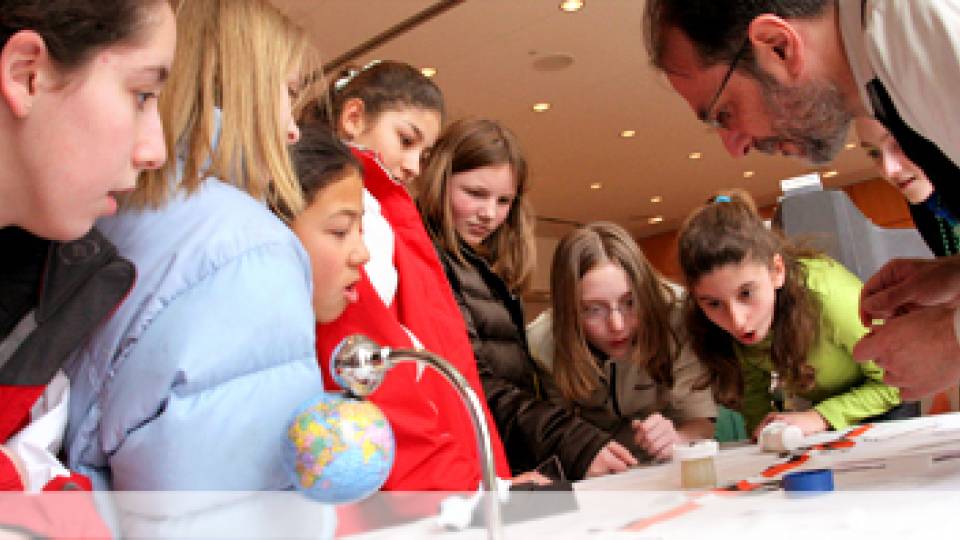Teachers in a new program at Princeton are learning about the fundamentals of materials science through experiments with some fundamental items: pennies, paper clips and sand.
The Materials Mini-Camp, a one-week program that runs through Aug. 12, is designed for high school science teachers to develop and teach a materials science course in their schools or to merge materials science with their existing physics and chemistry classes. The intensive program allows 30 teachers to work with metals, ceramics, polymers and composites, learning techniques and concepts that can translate into effective lessons to bring back to their own classrooms and laboratories.
The program is organized and funded by the Princeton Center for Complex Materials (PCCM) in partnership with Rutgers University and ASM International, a materials science society that sponsors the camps in multiple venues. PCCM, which is funded by the National Science Foundation, is part of the Princeton Institute for the Science and Technology of Materials (PRISM).
"Most of the teachers here see materials science as a way of bringing the laboratory and the classroom into the real world, and that's a way to reach many of their students," said Daniel Steinberg, outreach director for PRISM.
"Our scientists are looking in a very fundamental way at the structure of things, and their fundamental research is going to lead to the new technologies of the 21st century. That's the same thing we're trying to teach here," Steinberg said.
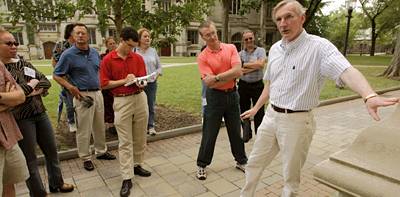
In a recent session on metals in Frick Laboratory, the teachers cranked pennies through a rolling mill to study the malleability of copper and zinc. They also heated, cooled and bent paper clips and bobby pins to observe how the metals weakened and strengthened depending on their physical properties.
During an introductory chemistry session, groups of teachers made their own concrete by choosing any ratio of sand, gravel or cement to mix with water. "Everyone used their own recipe, which is something the students in their classrooms will be able to do very easily," Steinberg said.
Other activities include taking apart incandescent light bulbs, making glass from common soil, studying the properties of nylon and examining the transformation of peanut brittle from amorphous goo to a glass-like sheet of candy.
Erin Welsh, who teaches physics and chemistry at Hamilton High School West, said, "I needed to collect more labs. One of the selling points of this program is that these are inexpensive things you could find in your house, so it wouldn't cost the school a lot of money."
Leo Brancato of Pemberton High School, who teaches biology, physical science and integrated science, said the hands-on aspect of materials science will benefit his students.
"You can pose a question, pull in the materials, generate the data and see the results -- and do it a way that will grab the students," he said. "It brings a lot more realism to physics and chemistry, as opposed to just working your way through the chapters."
He added with a laugh, "You get to use a lot of fire in this course, which is always fun. The kids love that."
In addition to their time in the lab, the teachers interact with Princeton chemists, physicists and engineers who can provide insight into innovations in materials science. Earlier this week, George Scherer, a professor of civil and environmental engineering, gave a talk on materials issues in art conservation. Scherer then took them on a tour of the Princeton campus to view examples of how water and salt can damage stone buildings and monuments.
Steinberg said the Materials Mini-Camp will be held at Rutgers next year, then return to Princeton the following year. Eventually, the organizers plan to develop an advanced course in addition to this introductory course so one level can be taught on each campus every summer.
"This is the beginning of something big," Steinberg said. "You teach 30 teachers about materials science, and they each teach 100 or so students in one year -- already you're reaching 3,000 students. Each year that's going to expand."
